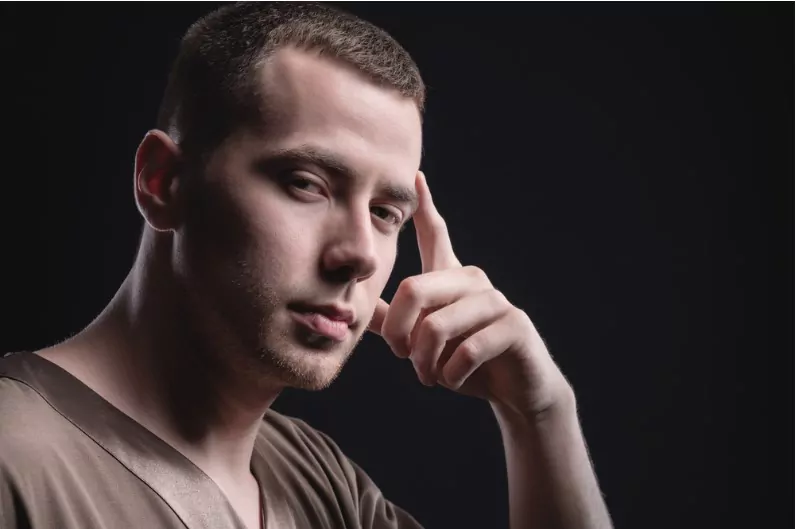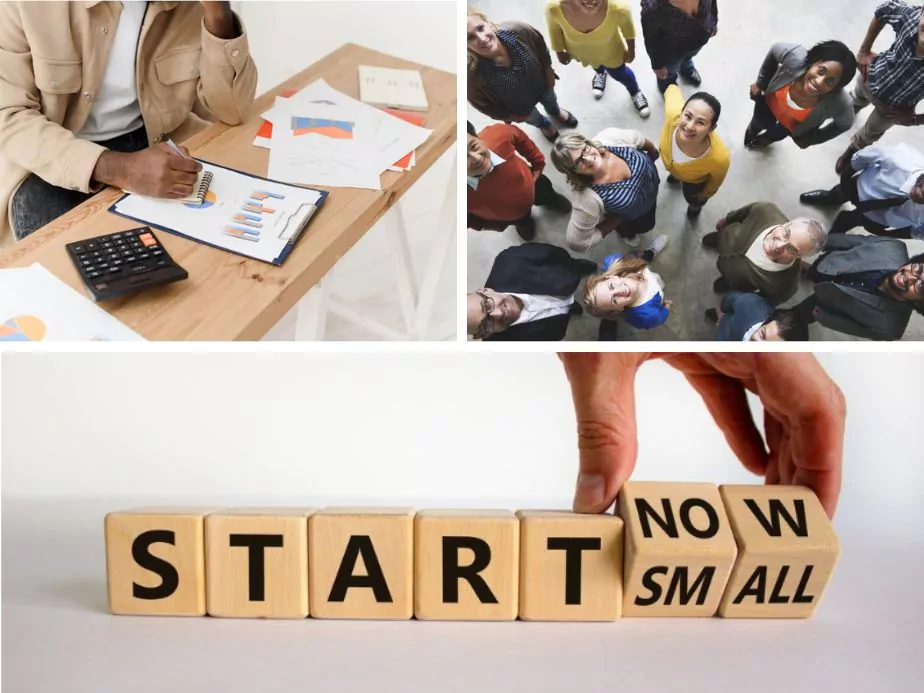How To Learn Mentalism? Cracking the Code

Mentalism – the world of mind reading, predictions, divinations, telepathy, and influencing thoughts. It’s a mysterious art that has been gaining popularity due to the intriguing performances of renowned mentalists worldwide. However, mentalism isn’t just for those gracing grand stages; with patience, practice, and perseverance, anyone can learn the techniques behind this fascinating craft.
In this comprehensive guide, we will dive into how to learn mentalism, exploring the art, techniques, exercises, and resources you need to begin your mentalism journey. By the end of this read, you’ll have a solid foundation to start developing your mentalist skills.
1 What is Mentalism?
Mentalism is a performing art, much like magic, that relies on psychological principles and techniques to create the illusion of supernatural powers. It involves a blend of intuition, quick thinking, knowledge of human behaviour, observation skills, and deception. Mentalists read, influence, and predict human behaviour, often making it seem as though they possess psychic abilities.
History of Mentalism
Though mentalism appears modern, its roots trace back centuries. Ancient oracles, spiritualists, and soothsayers used similar techniques to convince people of their extraordinary abilities. The contemporary form of mentalism emerged during the 19th century, paralleling the rise of spiritualism and seances. Today, mentalists like Derren Brown, Uri Geller, and Banachek continue to evolve this art form, leaving audiences spellbound.
2 Core Techniques in Mentalism
Mentalism is a complex field, employing various techniques to deceive and impress the audience. Here are some key methods to understand:
Cold Reading
Cold reading involves making accurate statements about a person without prior knowledge. Mentalists use observational skills, vague language, and educated guesses to produce seemingly accurate readings.
Hot Reading
In contrast, hot reading relies on previously acquired, specific information about a person. Through surreptitious methods, mentalists gather information about their subjects to make startlingly precise “predictions.”
Neuro-Linguistic Programming (NLP)

NLP is a psychological approach that involves understanding and manipulating people’s thoughts through language. Mentalists use NLP to subtly guide their subjects towards certain actions or thoughts.
Magic and Misdirection
Mentalists often employ elements of magic, like sleight of hand and misdirection, to enhance their performances, directing their audience’s attention away from their methods.
3 Starting Your Mentalism Journey
Step 1: Learn the Basics of Human Psychology
Mentalism relies heavily on a deep understanding of human behaviour and psychology. This is why the first step to learning mentalism is to study basic psychology.
Read books and articles about human behaviour, persuasion, and body language. A good starting point is Robert Cialdini’s “Influence: The Psychology of Persuasion”. The book explains key principles of influence and persuasion that can be applied to mentalism.
Another excellent resource is “What Every Body is Saying” by Joe Navarro. This book provides a comprehensive overview of how body language reveals our thoughts and emotions, an invaluable tool for any aspiring mentalist.
Step 2: Master the Art of Misdirection
A misdirection is a key tool in a mentalist’s arsenal. This skill involves diverting the audience’s attention away from what you are really doing. Books on magic and illusion can be beneficial for understanding misdirection. For instance, “Magic by Misdirection” by Dariel Fitzkee is a classic in this field.
Step 3: Understand the Principles of Cold Reading
Cold reading is a technique used to give the illusion of mind reading. It involves making high-probability guesses about a person based on their appearance, body language, and responses. It takes practice and a good understanding of people. “The Full Facts Book of Cold Reading” by Ian Rowland is a recommended guide for this.
Step 4: Learn the Art of Hypnosis
Hypnosis can be a potent tool for mentalists, used to influence a participant’s thoughts or actions. Books like “Trance-Formations: Neuro-Linguistic Programming and the Structure of Hypnosis” by John Grinder and Richard Bandler can provide a solid foundation in this area.
Step 5: Practice, Practice, Practice
Like any skill, practice makes perfect. Practice your skills in real-life scenarios, and start by performing simple tricks with friends and family. Get comfortable with performing and interacting with an audience. Feedback is invaluable in this stage of learning.
Step 6: Learn from the Best
Watch performances by renowned mentalists, and study their techniques, their stage presence, their communication skills, and their rapport with the audience. Some famous mentalists to study include Derren Brown, Max Maven, Banachek, and The Amazing Kreskin.
Step 7: Take a Course or Join a Magic Society
There are several online courses available for aspiring mentalists. Websites like MasterClass, Udemy, and Coursera offer courses on mentalism and related subjects like magic and psychology. Joining a magic society or a group of mentalists can also be very beneficial, as it provides a community to share ideas, learn from others, and receive feedback.
4 Resources for Learning Mentalism
There are numerous resources available for aspiring mentalists. Here are some to get you started:
Books
Many comprehensive books on mentalism can provide the foundation you need. Apart from Corinda’s “13 Steps to Mentalism” and Annemann’s “Practical Mental Magic,” consider “Mind, Myth & Magick” by T.A. Waters and “Psychological Subtleties” by Banachek.
Online Courses
Several online platforms offer courses in mentalism, often taught by experienced mentalists. Websites like MasterClass, Udemy, and Coursera offer a range of courses tailored for various skill levels.
Workshops and Seminars
Live workshops and seminars offer a chance to learn from professional mentalists directly. They often include hands-on practice sessions and allow you to ask questions and receive immediate feedback.
YouTube Channels
Many professional mentalists run YouTube channels where they share tips, tricks, and tutorials. Channels like those of Derren Brown and Banachek are excellent places to start.
5 Practicing Mentalism

Just like any other skill, mentalism requires regular practice. Here are a few tips to make the most of your practice sessions:
Start Small
Begin with simple tricks and gradually move on to more complicated ones. This approach will ensure that you don’t feel overwhelmed and give up too soon.
Practice with Friends and Family
Your friends and family can be a great audience for your initial performances. They can provide valuable feedback, helping you refine your skills.
Join a Community
Connect with other mentalism enthusiasts, both beginners and professionals. Joining local clubs or online communities can provide a platform for sharing tips, learning from others, and getting constructive criticism.
Keep a Performance Journal
Maintain a record of your performances, noting what worked and what didn’t. This journal will help you track your progress, identify areas for improvement, and develop your unique mentalism style.
6 Ethical Considerations in Mentalism
As a mentalist, you possess the power to influence and deceive people. Therefore, it’s crucial to follow a code of ethics:
Consent
Always ensure your subjects are comfortable participating and understand that mentalism is a form of entertainment, not supernatural abilities.
Privacy
Respect people’s privacy. Do not use your skills to uncover sensitive information or exploit people’s vulnerabilities.
Honesty
While deception is part of your act, avoid claiming to possess psychic or supernatural powers. Maintain the integrity of the art form.
7 Wrapping Up
Learning mentalism can be a captivating journey, opening a world of possibilities. As you begin this voyage, remember that the path to becoming a skilled mentalist is one of continuous learning, practice, and patience. Treat the art with respect, never ceasing to amaze your audience while maintaining ethical boundaries. Welcome to the enthralling world of mentalism!
Note: This guide aims to provide a broad overview of learning mentalism. Each subsection can be further expanded into a full-fledged article, offering more in-depth knowledge and insights.
Community Q&A
About This Article
This article has been viewed 470 times.



